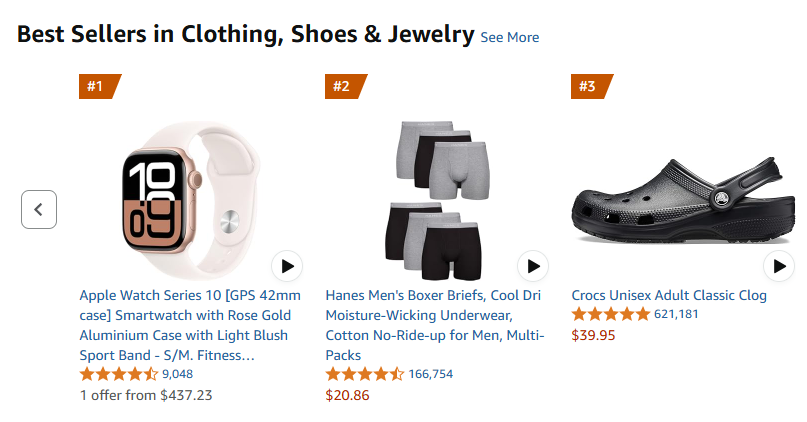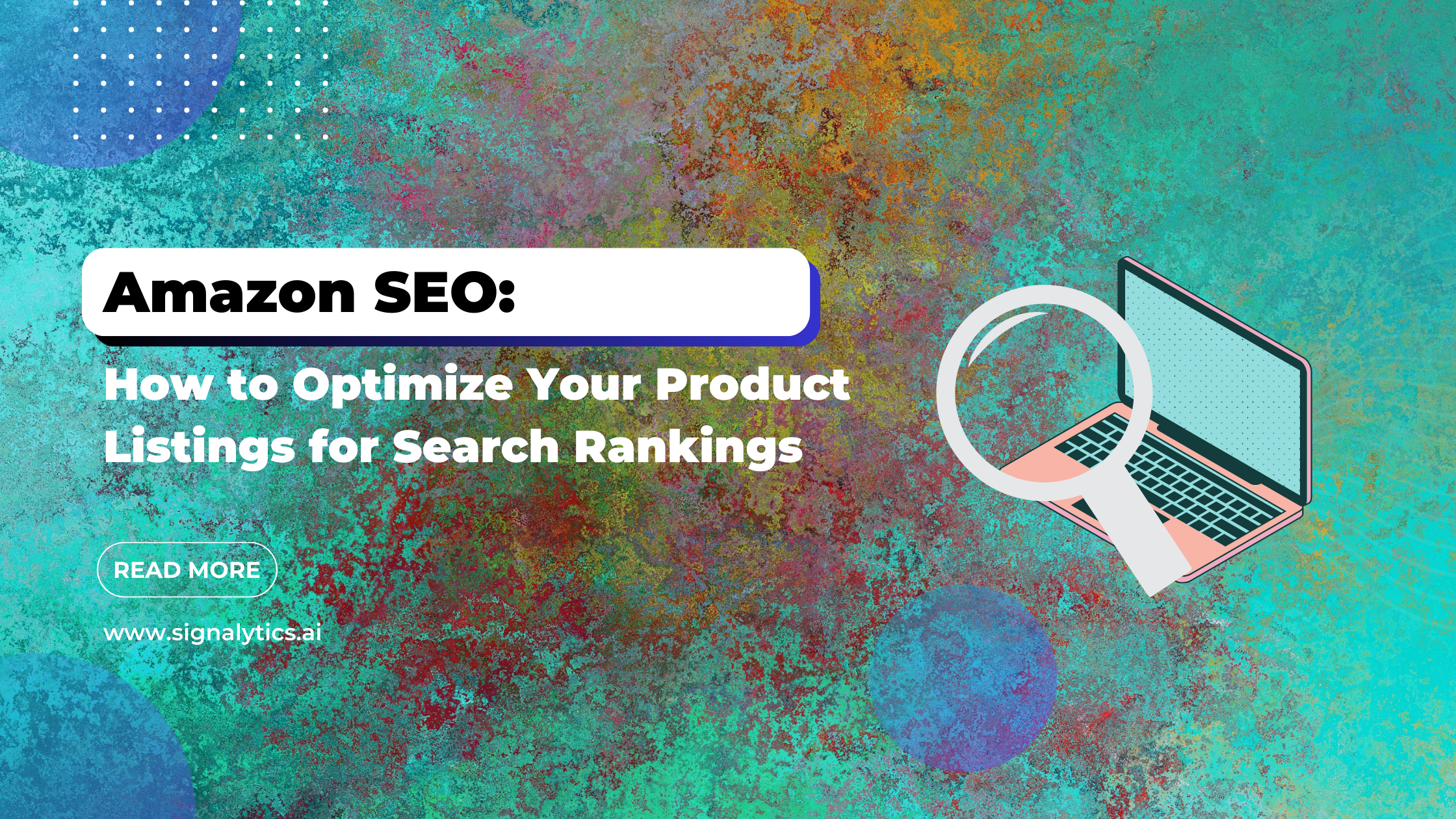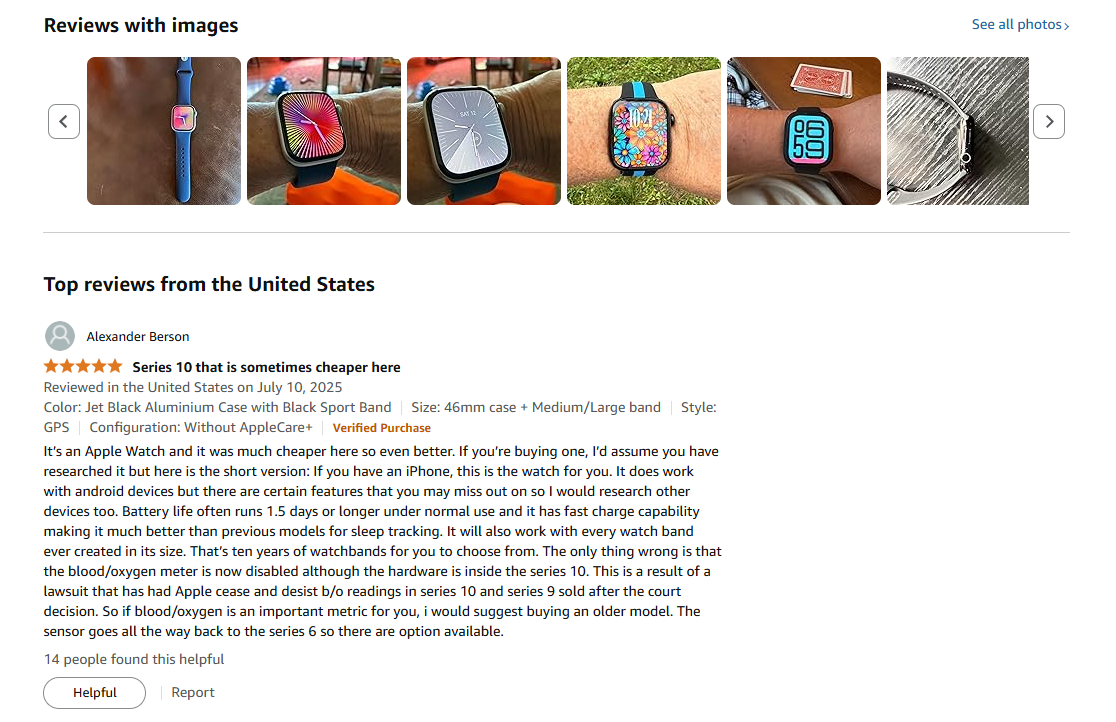Achieving a top rank on Amazon is vital for sellers who want to increase visibility, attract more buyers, and surpass competitors. With countless products battling for attention, it’s crucial to understand precisely how Amazon’s ranking algorithm operates.
In this comprehensive guide, we’ll examine Amazon’s key ranking factors, offer practical advice, recent data, and share genuine examples from Amazon best sellers to clearly demonstrate best practices.
Understanding Amazon’s Ranking Algorithm
Amazon’s A9 algorithm forms the core of product rankings, analyzing critical elements like relevance, sales performance, and customer satisfaction. The primary goal of the A9 algorithm is to match customers’ search queries with the most accurate and useful product listings available.
How Amazon’s A9 Algorithm Functions
Amazon’s A9 algorithm evaluates several essential aspects that directly influence product visibility and rankings:
-
Keyword Relevance: Amazon matches customer search terms with products that include similar keywords. Precise keyword usage greatly enhances visibility. For example, when Seller Alpha adjusted their product titles and bullet points with carefully selected keywords, their product visibility significantly improved within a few weeks. Keyword ranking tracker is crucial to use smartly.
-
Sales Velocity: This refers to the rate at which products sell over time. Higher sales velocity signals product popularity and thus boosts ranking positions. Seller Bravo employed effective seasonal promotions and deals during Black Friday, resulting in a remarkable 200% increase in sales velocity and a subsequent rise in rankings.
-
Customer Satisfaction and Reviews: Positive feedback and high product ratings strengthen trustworthiness and boost rankings. Brand Charlie implemented a proactive customer feedback management system, boosting their ratings from 3.5 stars to 4.8, significantly improving their search ranking.
-
Inventory Management: Maintaining steady stock availability is critical to sustaining Amazon best sellers rank. Stockouts negatively impact visibility. Seller Delta faced regular stockouts which harmed rankings, but after switching to an automated inventory management system, they dramatically reduced stockouts and increased their rankings considerably.
-
External Traffic: Generating traffic from outside Amazon through various channels such as social media, influencer partnerships, and Google Ads can greatly improve your Amazon rankings. Seller Echo drove significant traffic from Instagram influencers, resulting in a 45% boost in their Amazon product rankings.
Effective Strategies for Improving Amazon Product Ranking

Amazon best sellers products
1. Product Listing Optimization
Ensuring product listings have well-researched keywords in titles, bullet points, descriptions, and backend fields is essential. Amazon Keyword ranking tools like Helium 10 or Jungle Scout can assist you in finding highly converting keywords.
Real-World Example: Seller Foxtrot optimized their product listings with strategically chosen keywords, achieving a 35% increase in organic sales within 90 days.
2. Boosting Sales Velocity
Boost your sales velocity by strategically timing promotions and offers. Higher sales rates enhance rankings.
Case Study: During Prime Day in 2024, Seller Golf successfully executed lightning deals and discounts, increasing their sales velocity by over 200% and significantly enhancing their Amazon ranking.
Understanding Sales Velocity and Amazon SEO
Consistent sales velocity is integral to improving your Amazon SEO. Utilize strategic pricing strategies, targeted promotions, and outstanding customer service to maintain robust sales rates. Regular performance tracking allows you to adapt and optimize these strategies effectively.
Amazon BSR versus SEO Ranking
Amazon’s Best Seller Rank (BSR) indicates product performance within a specific category, while SEO ranking determines visibility in customer search results. Although interconnected, they represent distinct ranking metrics.
Practical Example: A high BSR indicates strong category performance, but effective SEO ranking ensures sustained visibility and attracts consistent customer traffic beyond periodic sales boosts.
Leveraging External Traffic for Amazon Best Sellers Rank
Driving external traffic significantly influences your Amazon SEO rankings. Marketing your products on external platforms can notably enhance your product’s visibility on Amazon.
Recent Statistic: According to a 2025 industry study, Amazon products receiving external traffic saw around a 40% greater improvement in ranking than those relying solely on Amazon’s internal search traffic.
Successful Example: Seller Hotel utilized TikTok influencers to drive substantial external traffic, resulting in a notable 50% rise in Amazon ranking.
Top 10 Myths About Amazon Ranking Debunked: Separating Fact from Fiction
Inventory Management and Amazon Rankings
Maintaining optimal stock levels positively impacts your rankings. Frequent inventory shortages harm your rankings due to lost sales opportunities and diminished visibility.
Example Scenario: Brand India suffered ranking drops due to frequent inventory shortages. After implementing inventory management software, they reduced stockouts by 90%, substantially improving their Amazon rankings.
Importance of Customer Reviews and Satisfaction
Customer satisfaction directly influences your rankings on Amazon. Positive reviews strengthen your product’s reputation and boost algorithmic rankings.
Real Customer Review Examples:
-
“This blender is amazing! It crushes ice smoothly and quickly. Highly recommended!” (5 stars, Kitchen Pro Blender)
-
“I was skeptical at first, but these earbuds deliver exceptional sound quality and battery life.” (4.5 stars, Sonic Wireless Earbuds)
On the other hand, fake reviews can significantly harm your credibility and potentially lead to penalties from Amazon. Sellers might be tempted to use fake reviews to inflate their Amazon best sellers rank artificially, but Amazon is increasingly efficient at detecting fraudulent activities.
Why Avoid Fake Reviews?
-
Risk of suspension or permanent removal from Amazon.
-
Loss of customer trust and long-term sales.
-
Negative impact on genuine product reviews, causing suspicion among potential buyers.
Case Study: Brand Juliet introduced proactive and authentic customer support strategies, resulting in genuine customer satisfaction and boosting their average ratings from 3.8 to 4.6 stars. This authentic approach markedly improved their Amazon rankings without the risks associated with fake reviews.
Recent Amazon Ranking Statistics (2025)
-
Optimized keyword listings witness a 30% growth in organic traffic.
-
Consistent stock availability improves your chances of appearing on Amazon’s first search results page by 20%.
-
External traffic contributes approximately 25% toward ranking improvements.
A Guide to Driving External Traffic to Your Amazon Product Listings
Final Thoughts
Succeeding in Amazon rankings demands careful keyword optimization, strong sales velocity maintenance, efficient inventory management, leveraging external traffic, and prioritizing customer satisfaction. By incorporating these strategies, Amazon sellers can navigate the dynamic marketplace effectively and achieve sustainable long-term success.



